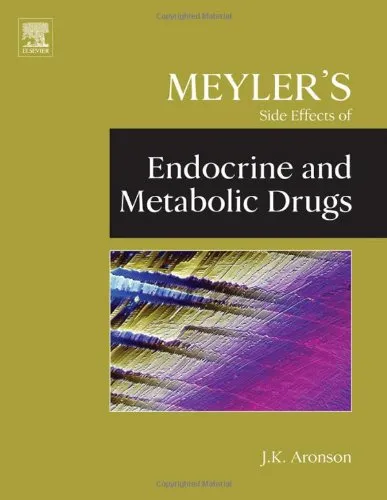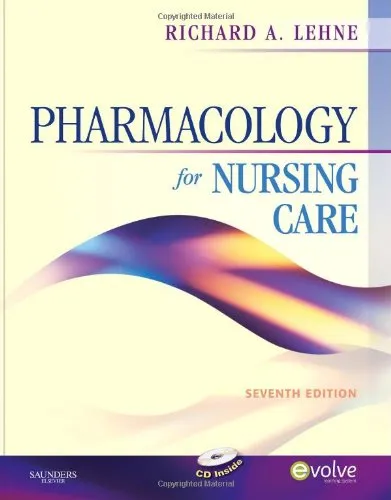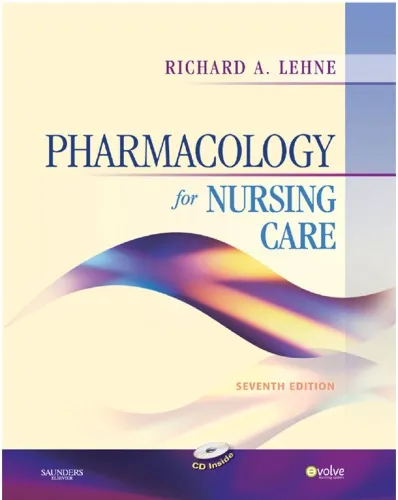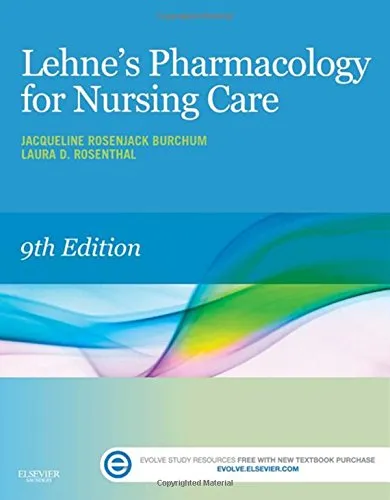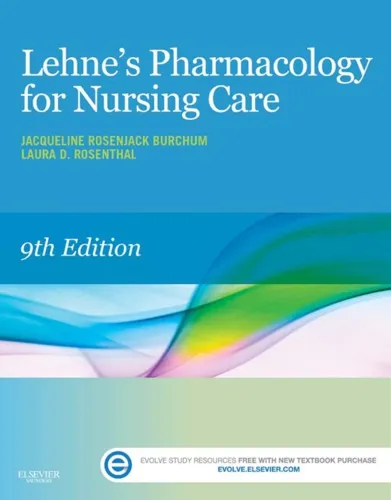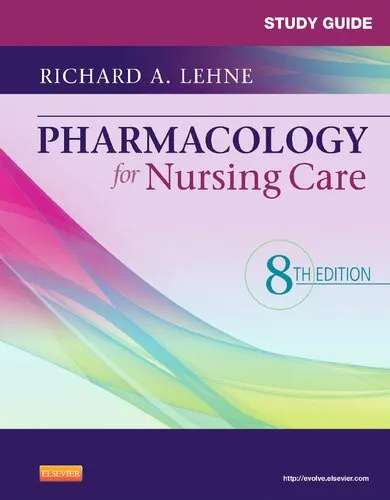Textbook of Pharmacognosy
5.0
بر اساس نظر کاربران

شما میتونید سوالاتتون در باره کتاب رو از هوش مصنوعیش بعد از ورود بپرسید
هر دانلود یا پرسش از هوش مصنوعی 2 امتیاز لازم دارد، برای بدست آوردن امتیاز رایگان، به صفحه ی راهنمای امتیازات سر بزنید و یک سری کار ارزشمند انجام بدینکتاب های مرتبط:
خلاصه جامع از کتاب 'Textbook of Pharmacognosy'
کتاب 'Textbook of Pharmacognosy' یکی از معتبرترین منابع در حوزه مطالعات دارویی و گیاهشناسی دارویی است که به طور گستردهای در دانشگاهها و مراکز تحقیقاتی تدریس و استفاده میشود. این کتاب به شکلی کامل و جامع به بررسی نقش گیاهان دارویی در علم پزشکی میپردازد و شامل قسمتی جداگانه درباره تاریخچه، شناخت و اشکال مختلف گیاهان دارویی است.
این کتاب به دو بخش اصلی تقسیم میشود: بخش اول شامل مفاهیم پایه و تعاریف مربوط به pharmacognosy است و بخش دوم به بررسی موارد پیشرفتهتر و کاربردهای بالینی میپردازد. نویسنده تلاش نموده تا با ارائه اطلاعات روزآمد و مستندات علمی به روشهایی که در تنظیم داروهای گیاهی به کار میروند، بپردازد.
نکات کلیدی
- فهم عمیق از ساختار شیمیایی و بیوشیمیایی گیاهان دارویی
- کاربردهای عملی و بالینی داروهای گیاهی در پزشکی امروز
- بررسی روشهای نوین استخراج و شناسایی ترکیبات فعال گیاهی
- مطالعات موردی درباره تأثیرگذاری گیاهان بر بیماریهای مختلف
نقلقولهای معروف از کتاب
"درک مناسب از گیاهان دارویی نه تنها به حفظ سلامتی طبیعی کمک میکند بلکه میتواند مبنای شناخت بسیاری از داروهای شیمیایی جدید باشد."
چرا این کتاب حائز اهمیت است؟
کتاب 'Textbook of Pharmacognosy' به عنوان یک راهنمای جامع و کامل برای افرادی که به مطالعه داروهای گیاهی و کاربردهای آنها علاقهمند هستند، شناخته میشود. با افزایش توجه جهانی به داروهای طبیعی و مکمل، این کتاب بیش از همیشه برای دانشجویان، محققان و پزشکان بالینی اهمیت دارد. ارائه روشهای تضمین کیفیت برای تولید داروهای ایمن و اثربخش، یکی از دستاوردهای منحصر به فرد این کتاب است. نویسنده تلاش کرده است تا با تکیه بر منابع علمی معاصر و معتبر، این اطلاعات را در دسترس همگان قرار دهد.
این کتاب نه تنها نکاتی درباره استفاده بهینه از گیاهان دارویی را پوشش میدهد، بلکه توجه ویژهای به ارتباط بین علم پایه و کاربردهای بالینی دارد. اگر به دنبال تقویت دانش خود در زمینه pharmacognosy هستید، این کتاب یکی از بهترین گزینهها برای شما خواهد بود.
Introduction to the Textbook of Pharmacognosy
The "Textbook of Pharmacognosy" is an indispensable resource for students, researchers, and practitioners in the field of pharmacognosy and natural products. Written by Mohammed Ali, this authoritative text delves into the complexities and intricacies of the study of medicinal plants and natural substances, integrating traditional knowledge with cutting-edge scientific research. It aims to bridge the gap between ancient herbal remedies and modern pharmaceutical sciences, providing a comprehensive overview of the subject.
Summary of the Book
The "Textbook of Pharmacognosy" provides an exhaustive exploration of the principles and practices within pharmacognosy, covering everything from the historical context and foundational concepts to advanced methodologies and applications. The text is structured to guide the reader through the evolutionary journey of natural products, focusing on their discovery, isolation, and characterization. Topics such as plant taxonomy, phytochemistry, ethno-pharmacology, and the role of natural products in drug development are covered in detail.
The book is divided into several key sections, each progressively building on the last. Initial chapters offer insights into the historical significance of medicinal plants, outlining how ancient civilizations utilized natural remedies. Following this, the reader is introduced to the scientific principles underpinning pharmacognosy, including extraction techniques, analytical methods, and the chemical composition of various botanicals.
In the later sections, the textbook addresses the application of pharmacognostic knowledge in modern drug discovery and development processes. It also highlights contemporary issues such as sustainability, conservation, and the ethical implications of sourcing natural products.
Key Takeaways
- Understanding the role of pharmacognosy in traditional and modern medicine.
- Familiarity with plant taxonomy and the classification of natural products.
- Knowledge of extraction and isolation techniques for bioactive compounds.
- Insight into the biochemical and pharmacological properties of medicinal plants.
- Awareness of the ethical, environmental, and commercial considerations in pharmacognosy.
Famous Quotes from the Book
"The study of natural products is not merely a journey back to our roots, but a step forward in the quest for novel therapeutic agents."
"In the harmonious relationship between man and nature lies the cure for many of mankind's ailments."
Why This Book Matters
The "Textbook of Pharmacognosy" is invaluable not only for its academic rigor but also for its practical applications in today's pharmaceutical and herbal industries. In an era where the return to natural and plant-derived substances is becoming increasingly relevant, this book serves as a crucial guide for understanding how ancient practices can complement and enhance modern science.
Its comprehensive scope makes it an essential text for graduate and postgraduate students, ensuring they gain a deep understanding of both theoretical and applied aspects of the field. By bridging traditional knowledge with scientific research, the book helps foster a holistic view of healthcare, recognizing the potential of natural substances in developing innovative therapeutic strategies.
دانلود رایگان مستقیم
شما میتونید سوالاتتون در باره کتاب رو از هوش مصنوعیش بعد از ورود بپرسید
دسترسی به کتابها از طریق پلتفرمهای قانونی و کتابخانههای عمومی نه تنها از حقوق نویسندگان و ناشران حمایت میکند، بلکه به پایداری فرهنگ کتابخوانی نیز کمک میرساند. پیش از دانلود، لحظهای به بررسی این گزینهها فکر کنید.
این کتاب رو در پلتفرم های دیگه ببینید
WorldCat به شما کمک میکنه تا کتاب ها رو در کتابخانه های سراسر دنیا پیدا کنید
امتیازها، نظرات تخصصی و صحبت ها درباره کتاب را در Goodreads ببینید
کتابهای کمیاب یا دست دوم را در AbeBooks پیدا کنید و بخرید
سوالات پرسیده شده از این کتاب
3096
بازدید5.0
امتیاز1
نظر98%
رضایتنظرات:
5.0
بر اساس 1 نظر کاربران
arsalan_khan
6 نوامبر 2025، ساعت 18:10
I read this Book .It is really a good book covering every aspect of pharmacognosy.
Questions & Answers
Ask questions about this book or help others by answering
No questions yet. Be the first to ask!


